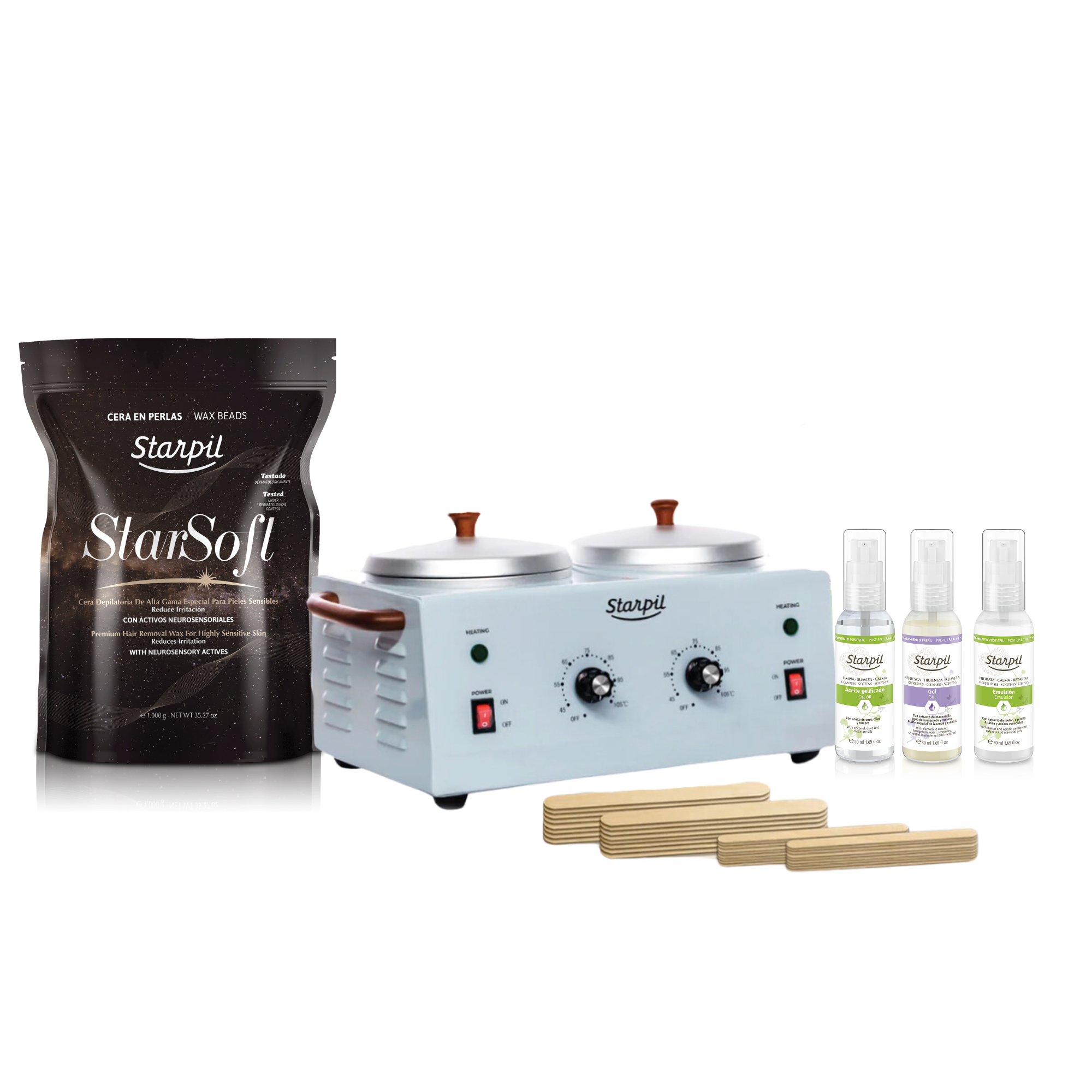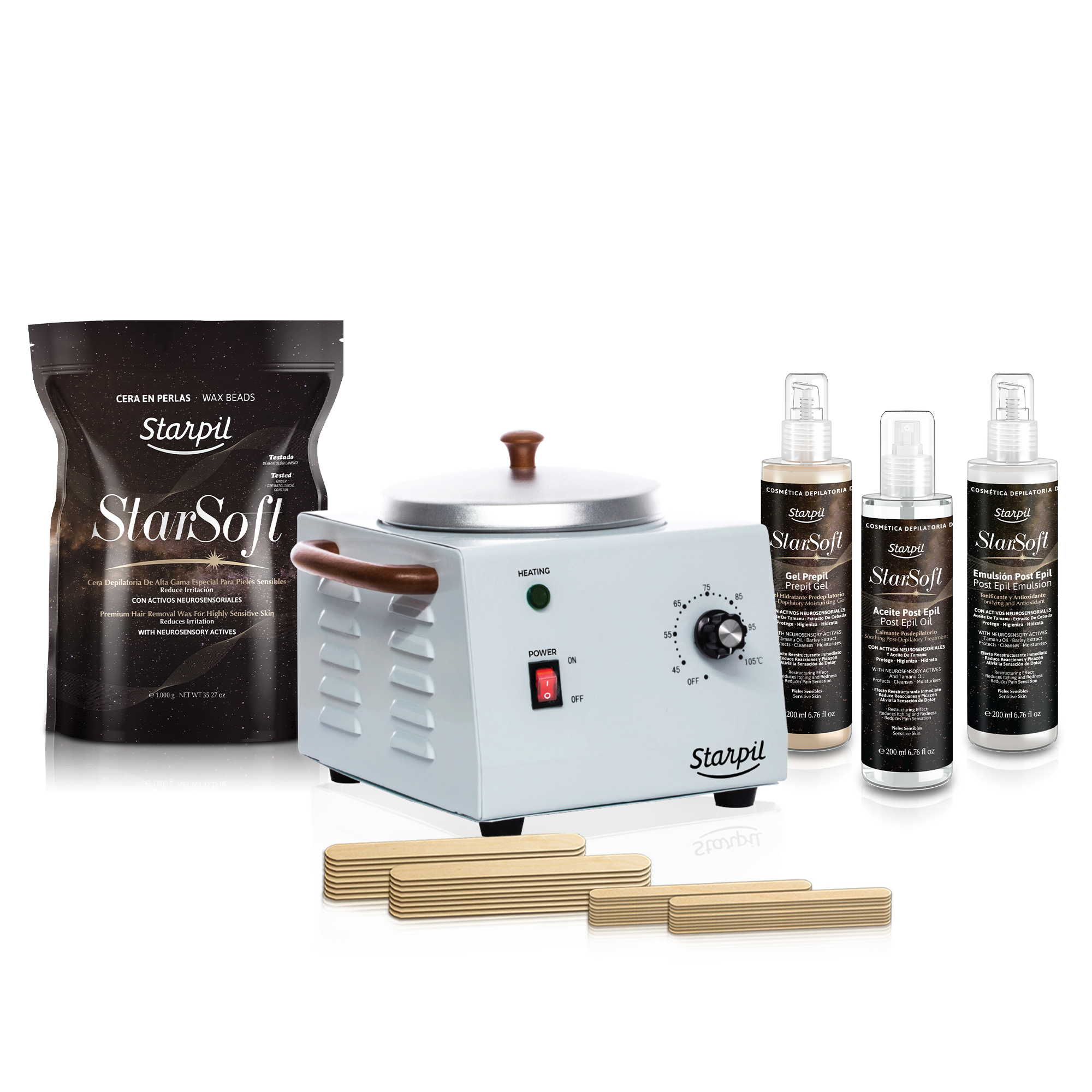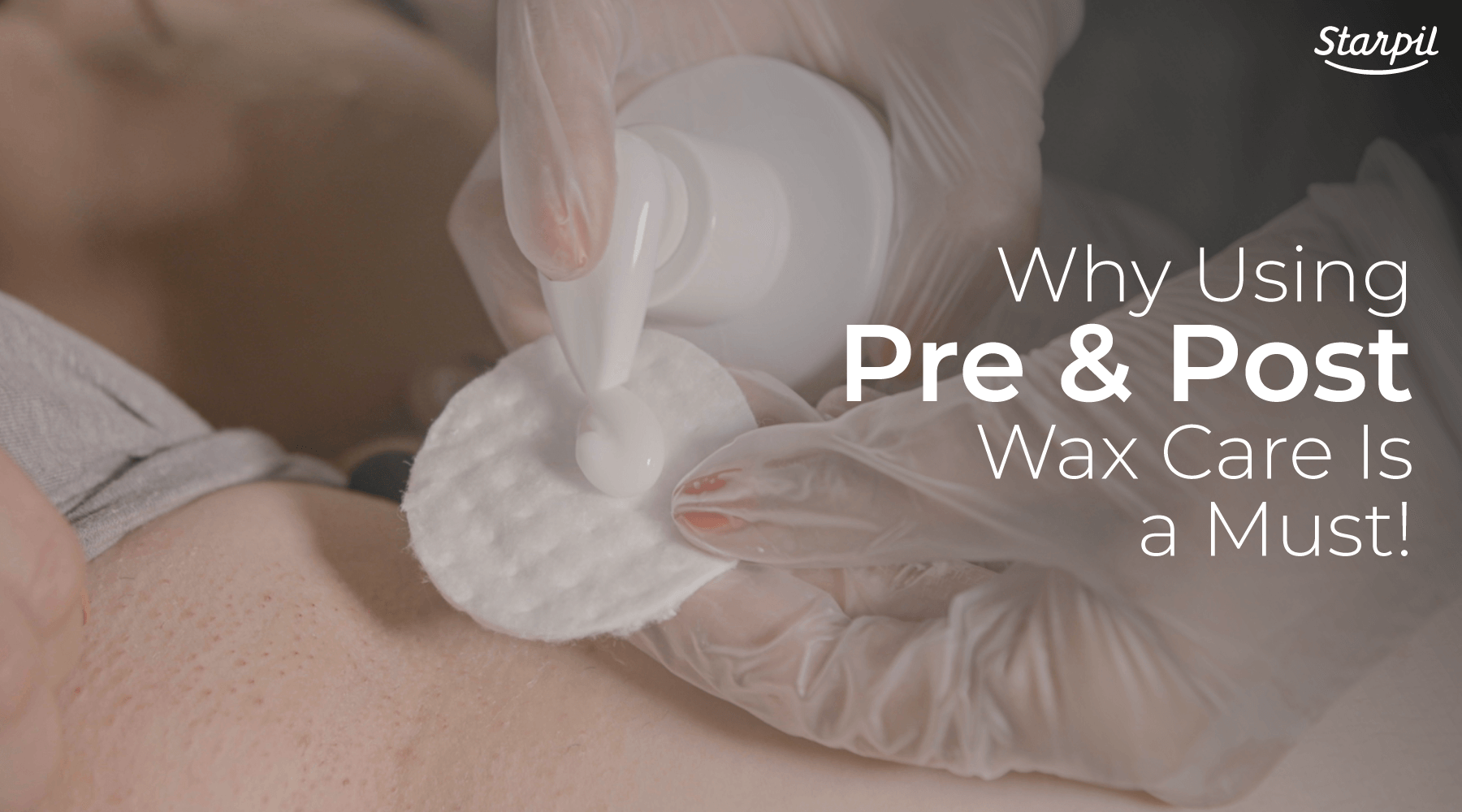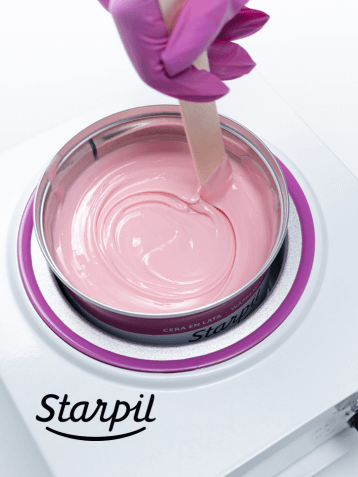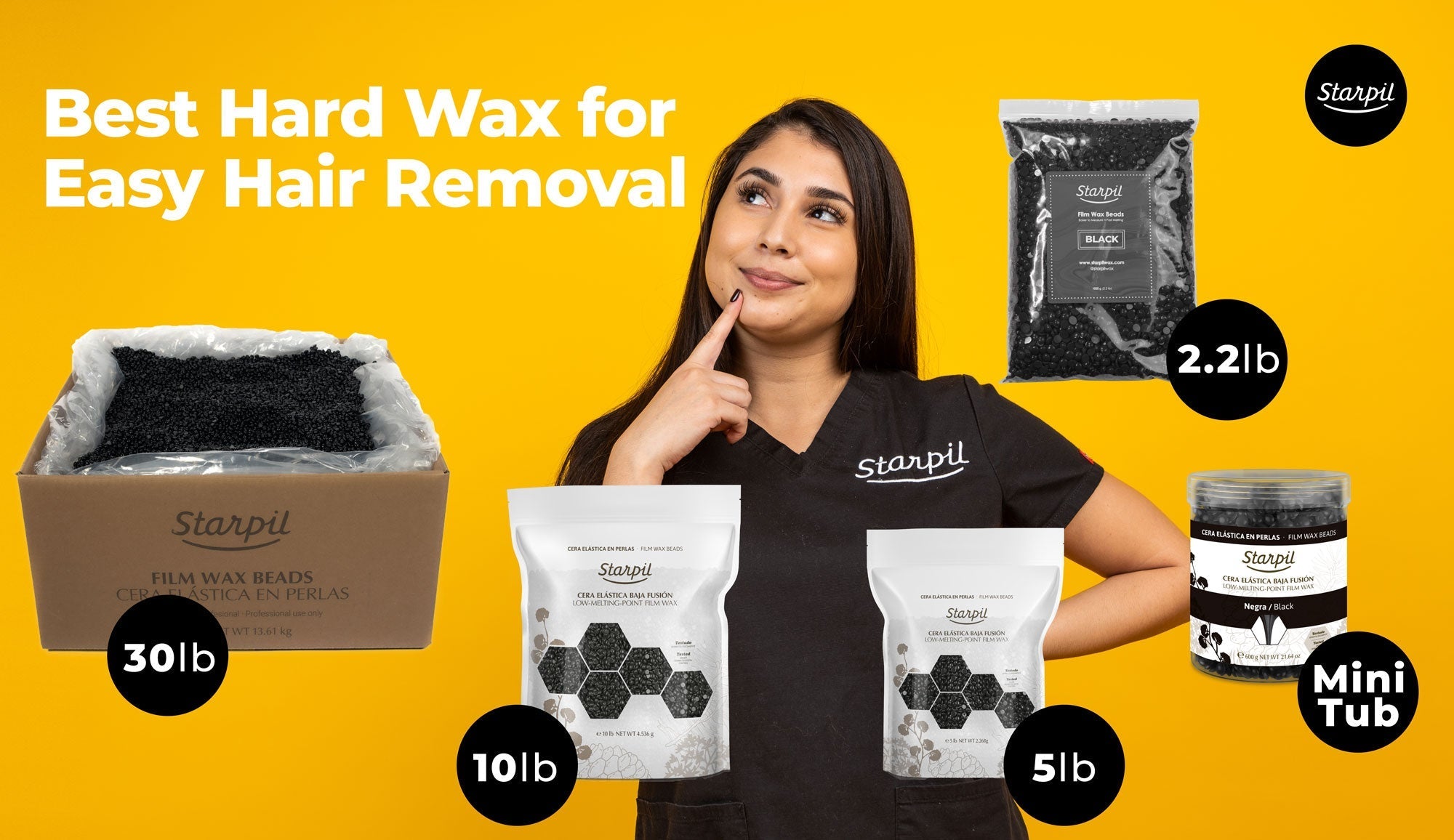Ingrown Hair Cysts: Treatments, Causes & Symptoms

We all know that getting an ingrown hair isn’t exactly a welcomed occurrence, but what can be even worse is the development of an ingrown hair cyst, which can cause clients pain and irritation - or just be plain uncomfortable!
As professionals, it’s not just our duty to wax clients responsibly to reduce the risk of ingrowns, but to inform them of post-waxing best practices to implement at home to prevent ingrowns after waxing.
In this guide, we’ll be discussing ingrown hair cyst symptoms and treatment and will answer all of your questions about how they form.
Table of Contents
Note to Estheticians
Your clients must understand the difference between typical ingrown hairs and when it has graduated into a cyst. It is wise to inform them of proper procedures on how to treat it and remind them of what NOT to do if they have a cyst compared to an ingrown hair.
This way, if they ever experience this after their hair removal appointment, they will feel prepared thanks to the education you’ve provided.
Ingrown Hair: Causes
Before we discuss ingrown hair cysts, let’s start with ingrown hairs. As a professional, you’re probably pretty familiar with this occurrence, but it’s important to have this kind of information on hand to relay to clients who might not be as familiar.
Ingrown hairs occur when hair fragments left behind by hair removal grow back into the skin's surface. Ingrown hairs can cause inflamed, tiny bumps that can be uncomfortable and easily irritated.
But what causes ingrown hairs? Ingrown hairs can result from a variety of factors, including improper hair removal techniques, like waxing or shaving in the wrong direction of hair growth, or existing skin conditions like having dry skin or dehydrated skin that’s easily inflamed from hair removal.
Those with sensitive skin can be particularly vulnerable due to their skin’s already easily-irritable nature. Ingrown hairs also occur frequently in those with coarse hair types, especially those with coarse facial hair.
Whether you’re waxing, shaving, or using another method of hair removal, practicing proper pre-wax care (by applying Starpil’s Original Pre-Wax Gel!), or exfoliating and moisturizing before hair removal can prep skin properly and reduce the chance of ingrowns.

If you’re shaving, the hair fragments caused by razors can frequently cause improper hair regrowth, and result in ingrown hairs. Additionally, improper shaving techniques or using blunt razors can easily result in razor burn or ingrowns, especially when having to go over the same area twice with an old razor. This can be easily prevented by either using new, sharp razors and proper technique or by avoiding shaving entirely in favor of more effective hair removal methods.
On top of skin type and sensitivity levels that can play into someone’s risk of developing ingrown hairs, wearing proper clothing post-wax hair removal can also impact ingrown hair growth.
No matter what hair removal process you use, following proper aftercare procedures is key to reducing ingrown hair growth.
Apply Starpil’s hydrating and moisturizing Original Post-Wax Lotion and Post-Wax Oil to kickstart skin recovery after hair removal. Additionally, make sure to avoid further skin irritation and allow it to breathe by wearing loose, breathable clothing. No tight or stifling fabrics allowed!
Though you’re most at risk for ingrowns when shaving, they can, unfortunately, result from any hair removal process. That’s why pre and post-wax care and avoiding excess skin friction after waxing is so important.
Upon the occurrence of ingrown hairs, they’re thankfully very treatable and usually go away on their own. For those that stick around, however, they can be treated in a variety of ways:
- Ingrown Hair Serum Spray: 24-48 hours following a wax, make sure to apply Starpil’s Original Ingrown Hair Serum Spray to sanitize skin and absolve it of any ingrowns.
- Warm Compress: After the appearance of ingrowns, apply warm compresses to the area to coax out hairs and clear pores.
Skincare Routine: Make sure to cleanse and exfoliate skin regularly, and try to let the hair go away on its own without further inflaming the area.
What Is An Ingrown Hair Cyst?
An ingrown hair is when a hair has been trapped under the skin and continues to grow downward instead of upward in a typical growth pattern. This ingrown progresses into an ingrown hair cyst when a substance, often fluid, builds over time and gets trapped under the skin in a sac formation.
These types of cysts can sometimes be filled with air, skin cells, or even keratin.
Cysts rear their ugly head (just kidding, cysts don’t have a head) as a large bump underneath the skin.
This is a tell-tale sign difference between an ingrown hair and an ingrown hair cyst. The ingrown hairs will create smaller bumps with a head where you can sometimes even see the actual hair beneath the surface. A cyst will be much larger and have no head on them. This is a sign that the actual ingrown hair is now far deeper underneath the skin and not accessible to rid yourself of.
These cysts can present themselves anywhere on your body that hair removal is done, most often occurring in the pubic region.
Cysts can often become quite painful and most likely will not go away on their own due to the amount of fluid trapped under the skin. It’s wisest to talk to your doctor or dermatologist for treatment recommendations once it reaches this point.
What if you think it has further graduated to an infected cyst?
What Does An Infected Ingrown Hair Cyst Look Like?
An infected ingrown hair cyst looks like an excessively red bump, with extra redness and swelling surrounding the lump on the skin. It has a warm feeling and can cause intense pain.
Pictured is a regular cyst, which is not to be confused with an ingrown hair cyst. They look similar but have different origins and treatment options. If you notice signs of infection or if the cyst has changed in some way, visit a doctor or dermatologist for professional treatment.

At this stage, it would not be uncommon for a doctor to prescribe oral or topical antibiotics to help with the infection; they can then discuss a plan of action on how to remove the cyst entirely if it has progressed.
So let's say you have this sizable red bump underneath your skin that is a little painful and less than attractive. It's not infected, but it's still there. How can you get rid of this stubborn cyst?
How Do You Get Rid Of An Ingrown Hair Cyst?
Once an ingrown hair has progressed to a cyst, it's unlikely that it will go away on its own, even with at-home treatment attempts. To completely get rid of the cyst, you will need to go to a doctor for removal.
Avoid picking, cutting, squeezing, scratching, tweezing, or just plain touching that cyst at all costs. This will only inflame it further or cause more bacteria buildup.
Because of the accumulation of different substances (air, fluid, skin cells, etc.) deep under the skin, the ingrown hair has now been pushed far down and will not be accessible, even with exfoliation or warm compresses.
So….
Should I Pop An Ingrown Hair Cyst?
No! Never pop an ingrown hair cyst. Remember, cysts do not have heads like ingrown hairs do. If you squeeze or pick at the cyst, you could end up with an infection or scarring, which are roads you do not want to go down. This means- no popping.
If you are looking for a measure of relief from the cyst until you get to your doctor, use warm compresses to help alleviate any pain. Warm compresses every day for a few minutes a day can help the cyst to drain slowly on its own.
Be sure to not remove hair on or directly around the cyst. Waxing or shaving the cyst can make matters worse and prevent it from getting better.
Professional Ingrown Hair Cyst Treatment
Your doctor will use their discretion if it is necessary to remove the cyst.
If there is no pain associated with the cyst and is small enough that the doctor deems that it may go away on its own, you might be advised on how to manage or reduce it rather than remove it.
If the cyst should be removed, your doctor will use a sterile instrument and make a minute cut to release the contents of the cyst and the ingrown hair that started it all to remove. Afterward, they may prescribe antibiotics or a topical steroid medication to reduce inflammation and redness.
Ingrown Hair Cyst Treatment At Home
In minor cases of ingrown hair cysts, it may just look like an inflamed ingrown, or not be noticeable at all. For these types of cysts, at-home treatment is a great option to prevent them from developing further.
There are many at-home treatment options for these small cysts. Apply a warm compress to the affected area to calm the skin and open the pore, just as you would a regular ingrown. This will allow the hair to gradually become less engorged in the skin and will calm the inflamed area.
If your cysts progress and become a concern, or if you feel pain, discomfort, or indications that the area has become infected, consult your doctor for additional treatment and suitable recommendations.
Ingrown Hair Cyst Prevention
Since there isn’t much that can be done to treat ingrown cysts at home, we’ll focus on ingrown hair cyst prevention to ultimately prevent one from turning into a cyst.
For seven fantastic suggestions on how to treat and prevent regular ingrown hairs, consult our complete guide.
Two key preventative measures to use to avoid getting an ingrown hair are exfoliation and using an ingrown hair serum post-hair removal.
As we stated previously, it’s imperative to the prevention of ingrown hairs that you practice the best pre and post-wax care routine possible.
Before a waxing service, use Starpil’s Original Pre-Wax Gel to cleanse and exfoliate the skin. Following a service, apply Starpil’s Original Post-Wax Lotion and Post-Wax Oil to lock in moisture and hydration, and to speed up skin’s recovery process.
Remind your clients to exfoliate 2 to 3 days before their waxing appointment, as well as around 2 days after waxing. Their regular skincare routine should also entail an exfoliation regimen.
Exfoliation will prevent dead skin cells from creating a barrier for the hair to grow out of or excess skin cell buildup that could create a cyst under the skin.
Never forget to use Starpil’s Original Ingrown Hair Serum Spray to prevent and dissolve ingrowns before they become an issue.
Overall, prevent your ingrowns from occurring, but if you’re past that point, take measures to treat the ingrown hair BEFORE it turns into a cyst.
Final Thoughts
Ingrown hairs can result from any form of hair removal. However, without proper prevention and treatment, you could quickly have an ingrown hair cyst on your hands.
Cysts caused by ingrown hairs are much more painful and take longer to heal and get rid of. If you attempt to squeeze, pick, or tweeze the cyst yourself, you could end up causing an infection and scarring.
The cysts are best treated by doctors with safe and minimally invasive removal. Seeing your doctor will also help treat or prevent possible infections.





